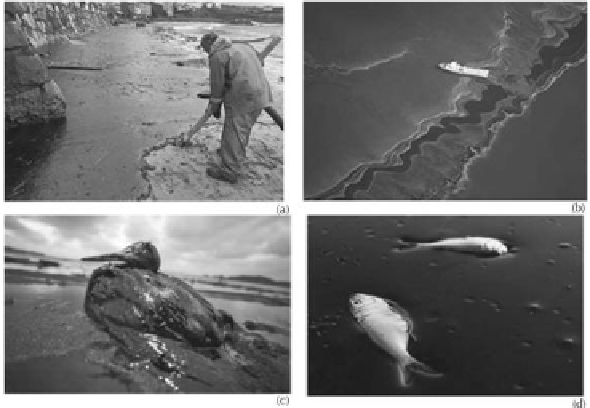Biomedical Engineering Reference
In-Depth Information
Chapter 23
magnetic Biofoams Based on Polyurethane applied
in oil spill Cleanup Processes
Oliveira, Geiza Esperandio, Souza Jr., Fernando Gomes,
and Lopes, Magnolvaldo Carvalho
iNtroduCtioN
Humanity is still very dependent on crude oil. In spite of the large efforts related to
the reduction of the petroleum consumption, our society remains depending on this
resource as an energetic source besides raw material for the production of several com-
modities. In addition, petroleum is, principally, carried through far distances, increas-
ing the chances of accidents. These accidents involving oil spill produces devastating
impacts on the environment, such as the ones shown in Figure 1, since the lipophilic
hydrocarbons of the petroleum present a strong interaction with the similar tissue of
the higher organisms. This assimilation produces intoxication and even death. Unfor-
tunately, the traditional cleanup process, which involves the use of dispersants and
surfactants (Bellamy et al., 1967; Bragg et al., 1994), often presents a larger impact
to the environment than the spill. This larger environmental impact is related to the
absorption of the dispersed oil by organisms, which leads to a greater time for the
biorecovery of the degraded environment (Barry, 2007).
Figure 1.
(a) Several impacts caused by spilled oil: Man removing oil spilled on the beach (Porto,
2010); (b) Aerial view of oil spill in the ocean (Bouza, 2010); (c) Bird covered in oil spilled on
environmental accident (CPDA NEWS, 2010); and (d) dead fish on oil spill (Caetano, 2010).



Search WWH ::

Custom Search